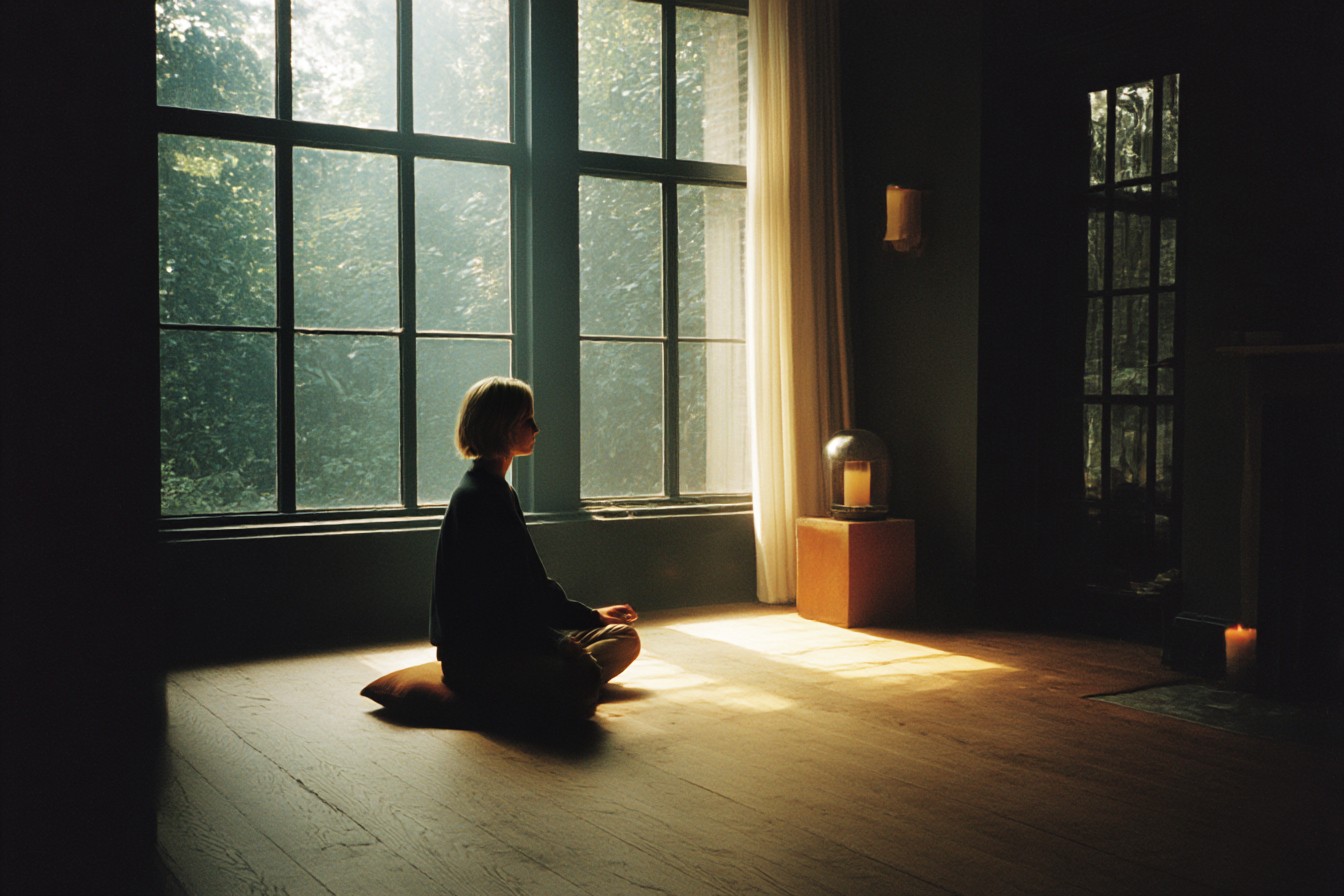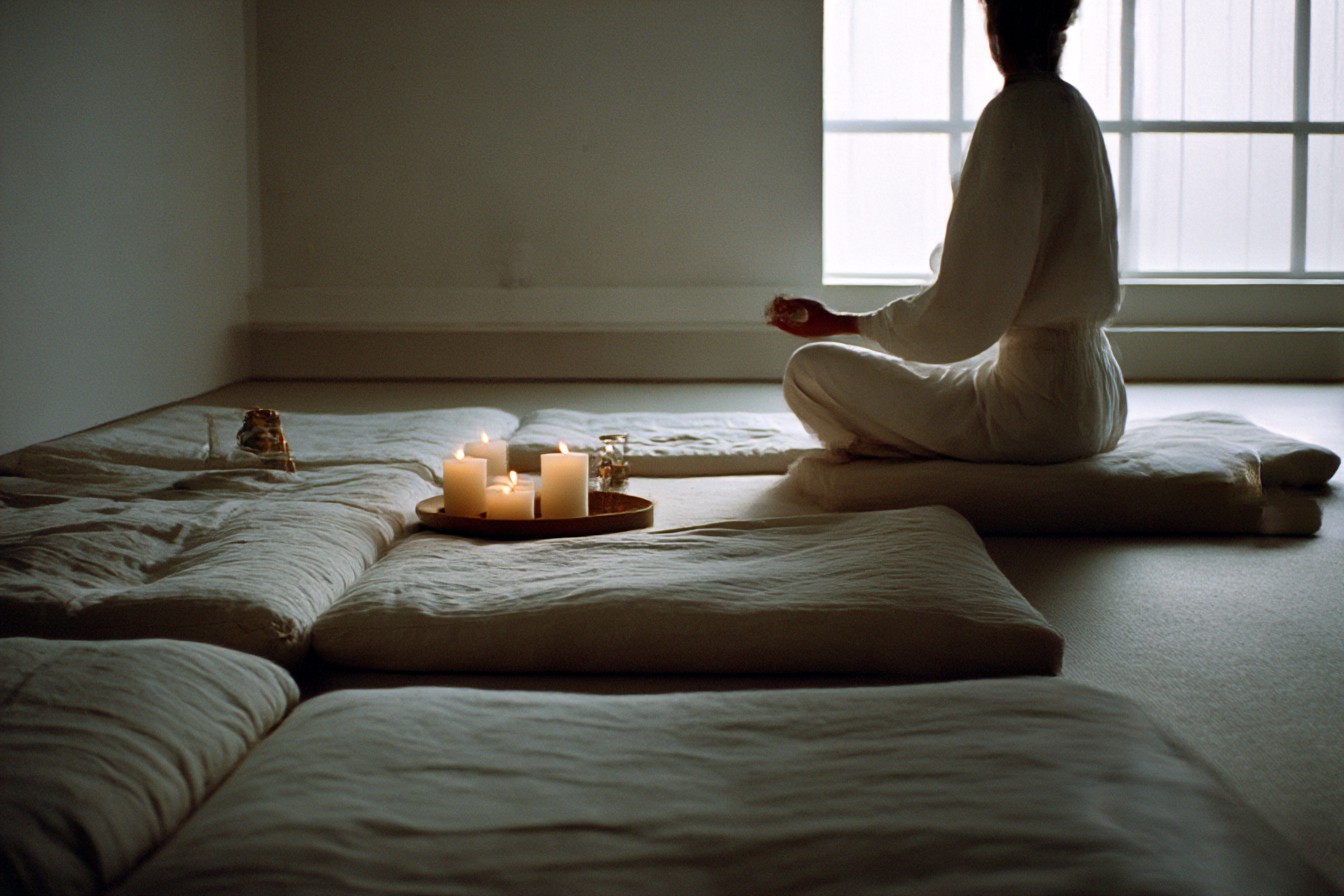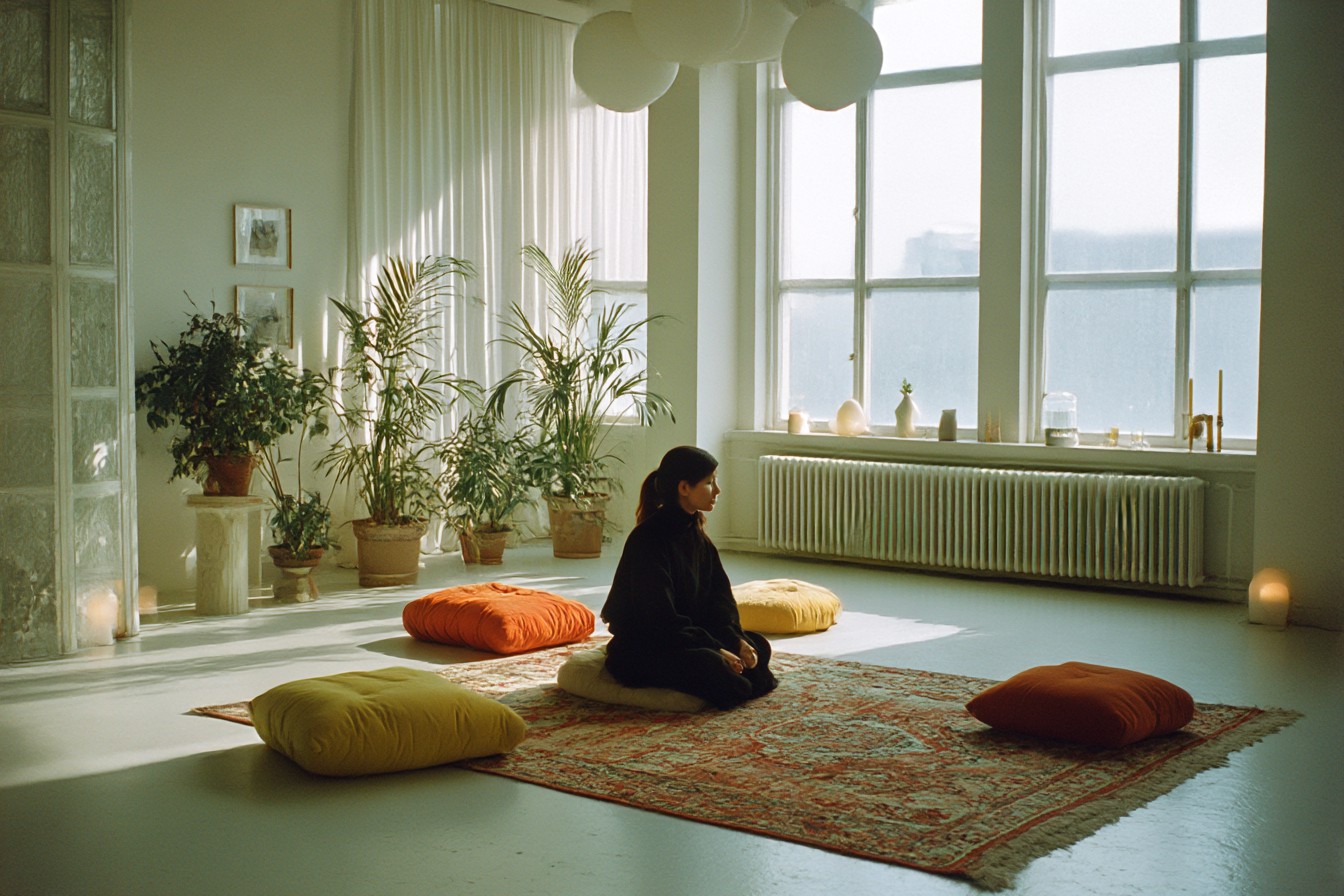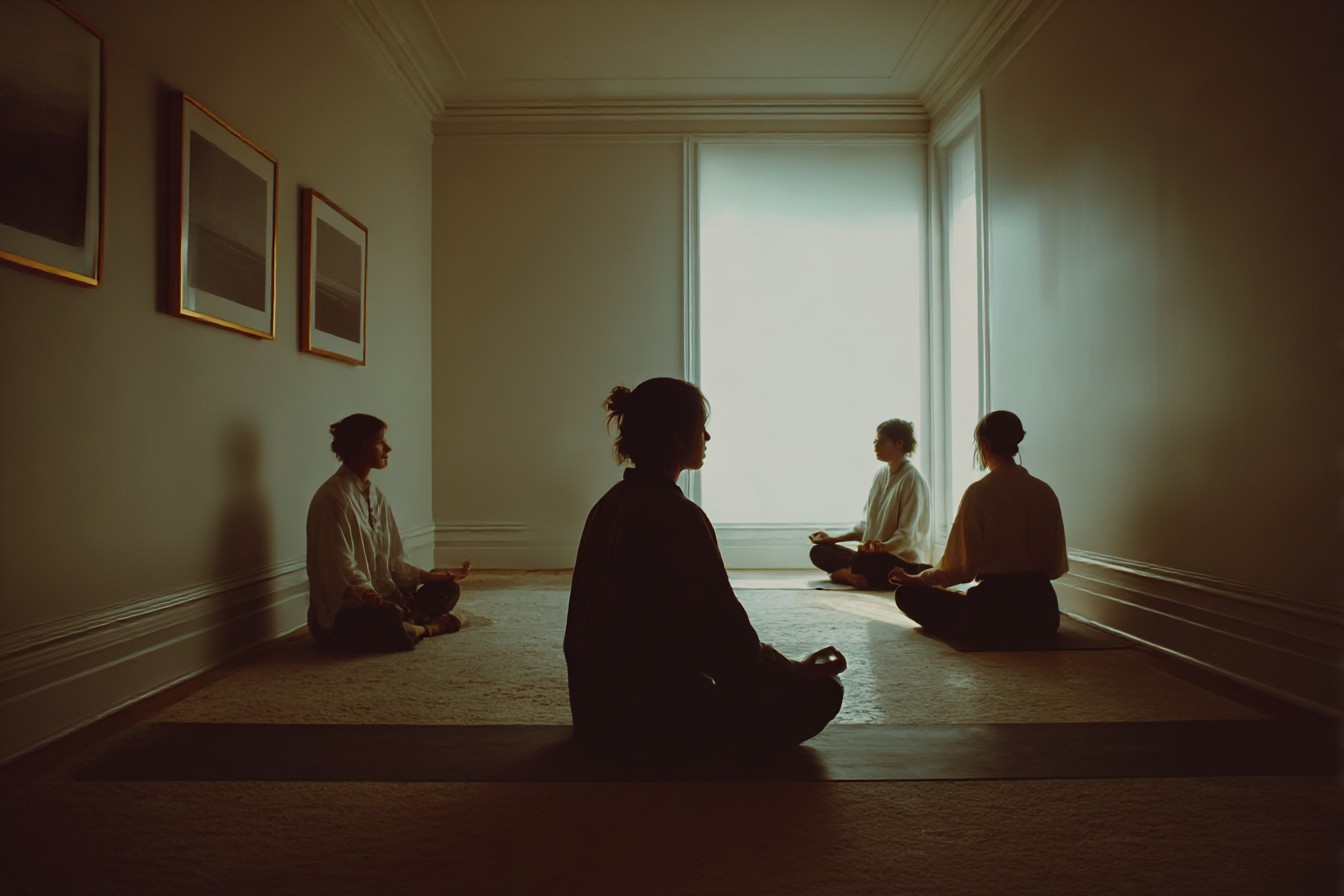I didn’t expect to spend three grand and ten days of my life learning how to teach other people to sit still and breathe. But there I was, in a sweaty yoga studio in Bali, surrounded by twenty other Westerners in various stages of spiritual awakening, all of us furiously taking notes on the correct way to instruct someone to do nothing.
The irony wasn’t lost on me. Not entirely, anyway.
Let me back up a bit. For years, I’d been what you might call a meditation tourist. I had the apps. I’d read the books. I’d even gone to a few retreats where I managed to sit cross-legged for upwards of thirty minutes before the pins and needles in my feet became so excruciating I had to shift position, causing the meditation teacher to sigh just loudly enough for me to feel like I’d personally failed the entire history of Buddhism.
My practice was, to put it generously, inconsistent. I’d meditate religiously for a week, feel marginally calmer, get busy with work, stop for three months, feel anxious, remember meditation exists, download a new app, and repeat the cycle. You know how it goes.
“You should really establish a daily practice,” my friend Jess told me over coffee one day. Jess is one of those infuriating people who actually does what she says she’ll do. She’d been meditating every morning for four years. “It’s changed my life.”
“Yeah, I know,” I said, the way you say “yeah, I know” when you absolutely have no intention of doing the thing you know you should do.
“No, seriously,” she pressed, clearly seeing through my casual dismissal. “Ten minutes a day. That’s all it takes.”
Ten minutes a day. It sounded so reasonable. So achievable. Why couldn’t I manage that? What was wrong with me?
And then, like a vision sent from the gods of procrastination, I saw an Instagram ad for a meditation teacher training course in Bali. The photos showed serene-looking people sitting on cushions overlooking rice fields, gentle smiles suggesting they had transcended the petty concerns of us mere mortals.
“Become a certified meditation teacher in just 10 days,” the caption promised.
Something clicked in my brain. A solution appeared, fully formed: I didn’t need to establish my own practice—I could skip straight to teaching others! I’d have credibility, accountability, and maybe even make some money on the side. Plus, surely being a meditation teacher would force me to actually meditate, right?
I texted Jess immediately: “Found the solution to my meditation problem. Becoming a teacher.”
She replied with the crying-laughing emoji, followed by: “That’s the most YOU thing I’ve ever heard.”
I chose to interpret this as encouragement.
Two months later, I was stepping off a plane in Denpasar, clutching my yoga mat like some kind of spiritual security blanket. I’d paid 3,000 pounds for this course—a fact I had carefully concealed from my practically-minded father who still questioned my decision to switch from accounting to freelance graphic design three years ago. This would be an investment in my wellbeing and potentially a new revenue stream, I told myself. Completely sensible.
The training center was exactly as Instagram had promised: open-air yoga shala, lush greenery, and enough Buddha statues to form a small army. Our group consisted of the usual suspects you find at these kinds of things: yoga teachers looking to expand their offerings, life coaches adding to their credentials, corporate burnouts seeking meaning, and spiritual seekers who casually dropped terms like “my last ayahuasca journey” into conversation within the first hour of meeting you.
And then there was me—the person who couldn’t stick with a ten-minute daily meditation practice but somehow thought teaching it was the logical next step.
Our lead instructor, Bhavana (formerly Barbara from Milwaukee, I later discovered), floated into the room on day one in flowing white linen, her gray hair in a perfect bun. “The journey of a meditation teacher,” she announced, “begins with the journey inward.”
Which sounded lovely but translated to sitting in meditation for three hours on the first day.
Three. Hours.
My previous record was 45 minutes at a retreat where I’d been too embarrassed to get up and leave. By hour two, my back was screaming, my feet had long since passed the pins-and-needles stage and entered some new territory of pain I didn’t know existed, and my mind was doing anything but quieting down. It was having a full-on party, complete with a highlight reel of embarrassing moments from my life, an extensive to-do list for when I returned home, and creative new worries I hadn’t even considered before.
“Notice the sensations arising and passing away,” Bhavana intoned serenely. “You are not your thoughts.”
I was pretty sure I was my thoughts, and they were currently plotting a mutiny.
That night, I called Jess from my room, whispering so my roommate (a serene German woman who had apparently been meditating since the womb) wouldn’t hear.
“I’ve made a terrible mistake,” I said. “I can’t do this. Who was I kidding? I’m not meditation teacher material.”
“Why did you really sign up for this course?” Jess asked, cutting through my panic with annoying precision.
“To deepen my practice,” I said automatically, parroting the language from the course brochure.
“Try again.”
I sighed. “Fine. Because actually establishing a daily practice seemed too hard, and I thought becoming a teacher would be a shortcut. And because the photos looked nice on Instagram. And because I had this fantasy that I’d come back all zen and centered and people would ask what my secret was.”
“Well, at least you’re honest,” Jess laughed. “But you’ve paid for it now, so you might as well stick it out.”
She was right, of course. Three grand was three grand. I couldn’t walk away now.
The next day, Bhavana announced we would be learning about different meditation techniques, which meant slightly less actual meditating—thank god. We covered mindfulness, loving-kindness, body scan, and various breathing exercises. I took copious notes, partly because I genuinely wanted to learn and partly because writing allowed me to look busy and spiritual without having to actually sit still.
By day four, something unexpected happened. During our morning meditation—now mercifully only 90 minutes—I had what Bhavana might call “a moment of presence.” For about three minutes, my mind actually quieted. I noticed my breath. I felt the sensations in my body without immediately labeling them as good or bad. And then, of course, I got excited about being present, which immediately yanked me out of being present, and I spent the remaining 87 minutes thinking about how I’d tell Jess about my three minutes of presence.
Progress, I suppose.
The middle days of the training blur together in my memory. We learned about the business of meditation teaching, practiced guiding each other through different techniques, and discussed the ethics of teaching something we were still learning ourselves—a conversation that hit a bit too close to home for me.
“You can only take people as far as you’ve gone yourself,” Bhavana said, fixing me with a look that made me wonder if she could read my fraud-filled mind.
In the evenings, I actually started practicing on my own—just ten minutes, but still. I told myself it was to prepare for the next day’s training, but honestly, I was starting to get curious about what might happen if I kept showing up for myself in this small way.
On day eight, we had to create our own guided meditation and lead the group through it. I stayed up late writing and rewriting mine, a simple body scan with some mindfulness elements. When my turn came, my voice shook at first, but as I continued guiding my peers, something settled in me. I wasn’t just reciting instructions; I was meditating with them, experiencing the practice as I led it.
“That was lovely,” the German roommate told me afterward. “Very authentic.”
Authentic. The word caught me off guard. I had spent so much time feeling like an impostor that I hadn’t considered the possibility that I might actually have something genuine to offer, even as a beginner.
The final days of training included discussions about creating space for people’s different experiences, handling difficult emotions that arise during meditation, and the importance of continuing our own practice. Bhavana emphasized this last point while staring directly at me, or so it felt.
“Your personal practice is the foundation of your teaching,” she said. “Without it, you have nothing to offer but empty words.”
I squirmed in my seat, wondering if my course application had somehow included “Person Who Tries to Skip to the Advanced Stuff Without Doing the Basics” in big red letters.
On the last day, we received our certificates in a ceremony that involved more incense than seemed strictly necessary. I felt a complicated mix of emotions: pride at having completed something challenging, embarrassment at my initial motivations, and a surprising spark of commitment to actually practicing what I’d just spent ten days learning to teach.
Back home, Jess took me out for dinner to hear all about my “spiritual transformation.”
“So, are you a zen master now?” she teased.
“Hardly,” I admitted, telling her about my struggles, my moment of presence, and my complicated feelings about the whole experience.
“And the big question,” she said, “are you meditating?”
I nodded. “Ten minutes a day. Just like you said.”
“And how long will that last?” she asked, not unkindly.
“I don’t know,” I said honestly. “But something’s different this time. I realized that becoming a teacher wasn’t a shortcut around the practice—it just showed me how much deeper I need to go.”
I’ve been home for three months now. The certificate is framed in my office, though I haven’t actually taught anyone yet. I’m not sure when I’ll feel ready for that—maybe in a few months, maybe next year. What I do know is that my modest ten-minute daily practice has somehow survived longer than any previous attempt.
Some days it feels profound, most days it’s mundane, and occasionally it’s still a struggle to sit still for even that short time. But I keep showing up, not because I’m preparing to teach or because I expect some dramatic transformation, but because I’ve finally understood something that was probably obvious to everyone else all along: there are no shortcuts.
The irony, of course, is that it took signing up for a teaching course to get me to become a student. And sometimes, I guess that’s exactly the detour we need.














